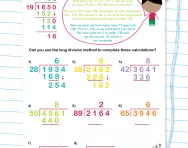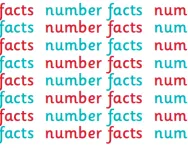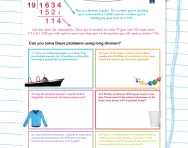Important update from TheSchoolRun
For the past 13 years, TheSchoolRun has been run by a small team of mums working from home, dedicated to providing quality educational resources to primary school parents. Unfortunately, rising supplier costs and falling revenue have made it impossible for us to continue operating, and we’ve had to make the difficult decision to close. The good news: We’ve arranged for another educational provider to take over many of our resources. These will be hosted on a new portal, where the content will be updated and expanded to support your child’s learning.
What this means for subscribers:
- Your subscription is still active, and for now, you can keep using the website as normal — just log in with your usual details to access all our articles and resources*.
- In a few months, all resources will move to the new portal. You’ll continue to have access there until your subscription ends. We’ll send you full details nearer the time.
- As a thank you for your support, we’ll also be sending you 16 primary school eBooks (worth £108.84) to download and keep.
A few changes to be aware of:
- The Learning Journey weekly email has ended, but your child’s plan will still be updated on your dashboard each Monday. Just log in to see the recommended worksheets.
- The 11+ weekly emails have now ended. We sent you all the remaining emails in the series at the end of March — please check your inbox (and spam folder) if you haven’t seen them. You can also follow the full programme here: 11+ Learning Journey.
If you have any questions, please contact us at [email protected]. Thank you for being part of our journey it’s been a privilege to support your family’s learning.
*If you need to reset your password, it will still work as usual. Please check your spam folder if the reset email doesn’t appear in your inbox.
What is long division?
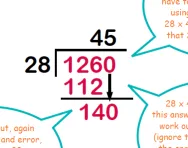
What is long division?
The long division method is used when you are dividing a large number (usually three digits or more) by a two-digit (or more) number. It is set out in a similar way to short division (the 'bus stop' method).
Long division: a step-by-step guide
Long division is set out in the following way.
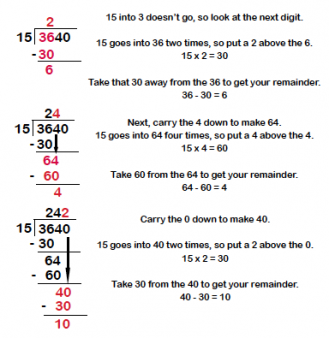


When do children learn to use different division methods?
Children start learning about division in Year 1, where they may be asked to share an even number of objects between two people.
They start learning their times tables in Year 2, at which time they also learn their division facts (for example, they learn that if 4 x 5 = 20, then 20 ÷ 5 = 4).
They continue to learn the rest of their times tables, including division facts through Year 3 and Year 4.
In Year 5 they will learn to divide three-digit and four-digit numbers by a one-digit number using short division (this is also known as the 'bus stop' method). They then move onto dividing larger numbers by two-digit numbers using long division, as shown above.
Teachers formerly used to teach children the method of chunking, however under the 2014 curriculum they are advised to use short division and long division.
Using division techniques in maths
It is very important that children are taught division in the context of problem-solving.
In Year 2 they may be asked to solve a word problem like this one:
I have 20 sweets. I share them between 4 people. How many sweets do they have each?
They may be encouraged to use counters to share out the 'sweets', but will be guided to move towards using their knowledge of division facts to work out this problem.
Children in Year 3 and 4 will answer questions using more difficult times tables, such as:
There are 42 children in a playground. They are divided into 6 groups, with an equal number of children in each. How many children are in each group?
In Year 5 and 6, they may be asked questions like:
There are 564 beads in a jar. They need to be divided equally into six small jars. How many beads will be in each jar?
I buy 23 cakes, each costing the same amount. The total comes to £11.04. How much does each cake cost?
It is really imperative that children get their heads around division in the context of their times tables, before they can go onto dividing bigger numbers. You can really help your child at home by asking them plenty of mental division questions in relation to their times tables.
It is also important that, in later KS2, they learn to divide numbers by 10 and 100 confidently and efficiently.
Teach your child long division for £1.99
Help your child grasp long division once and for all with TheSchoolRun's Mastering Long Division Step-by-Step action pack: 40 pages of explanations, examples, tips and practice questions for just £1.99. Download this targeted eBook now to boost your child's confidence (and yours!) and ensure that they are never worried about dividing larger numbers again.






